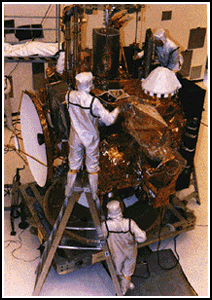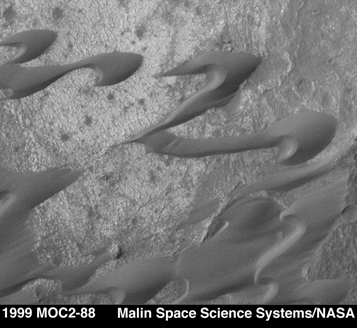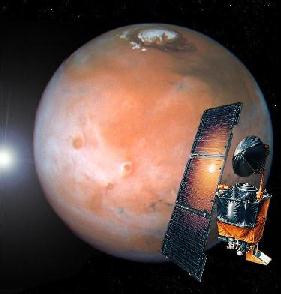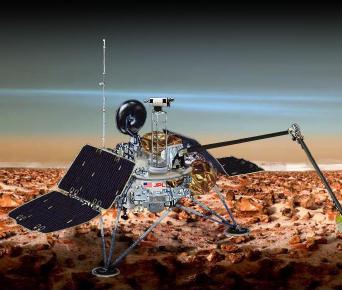

The first U.S. spacecraft to visit Mars following the Viking missions, was planned to be the Mars Observer. It was to map Mars and monitor its atmosphere, to better help us understand Martian geology and climatology. Unfortunately, 3 days before entering orbit around Mars, the spacecraft fell silent. It is suspected that a mechanical failure with a rocket caused the Mars Observer to explode.
 |  |
The Mars Pathfinder landed on Mars on the 4th of July, 1997. The spacecraft consisted of two major parts: a lander equipped with cameras and meteorological instruments, and a robotic rover which contained a number of geologic instruments. The mission was primarily an engineering mission, demonstrating technologies and concepts for eventual use in future missions to Mars. Pathfinder studied the atmosphere, weather and geology of Mars.



The primary mission of the Mars Global Surveyor is the same as the ill-fated Mars Observer: to orbit Mars and study its atmosphere and climate for a full Martian year (687 Earth days). After completion of the mapping of the surface in January 2000, the spacecraft will function as a communication satellite to relay data back to Earth from surface landers launched as part of future Mars missions.

 Olympus Mons, at a height of 16 miles, is taller than 3 Mount Everests and about as wide as the entire Hawaiian Island chain. This giant volcano is almost flat with its flanks sloping at 2o to 5o. The upper part of the volcano is rimmed with a band of whitish clouds. |
 A 310 km by 290 km view of a well developed dust storm covering the landing site of Viking 1 at Chryse Planitia. |

The Mars Climate Orbiter was to arrive at Mars in September 1999. It would have studied the distribution of water on Mars. An infrared radiometer would have scanned the atmosphere to profile its temperature, dust and water-vapor content, and clouds. It would have taken color pictures with a resolution or 40 meters and produced daily global images of the Martian atmosphere. Unfortunately, it failed to enter Martian orbit.

The Mars Polar Lander would have landed near the edge of the Martian south polar cap. As it descended towards touchdown, it was desinged to take a series of pictures to see what the terrain near the ice cap is like. On Mars, the lander would have spent 4 months studying the climate and geology of Mars. A robotic arm was to dig half a meter or a meter into the surface and examine 100,000 years of the Martian geologic record. The lander had a microphone to allow us to listen to the sounds of Mars. Unfortunately, due to a units conversion error, the probe crashed.
Before the probe entered the atmosphere, it was to deploy two "microprobes." Two basketball-sized aeroshells were to crash onto the Martian surface at a velocity of about 200 meters per second. Shattering on impact, each aeroshell would have release a miniature two-piece science probe that would punch into the soil to a depth of up to 2 meters. The microprobes' primary science goal was to determine if water ice is present in the Martian subsurface - an important clue in the puzzle of whether life exists, or ever existed, on Mars. The tiny science stations were to measure soil temperature and monitor local Martian weather. The microprobes would have operated for just about 50 hours. They were expected to land about 200 km from the landing site of the Mars Polar Lander. Unfortunately, these probes were lost when the Polar Lander was lost.

Goto Section 5 - Future Probes to Mars (1999 version).